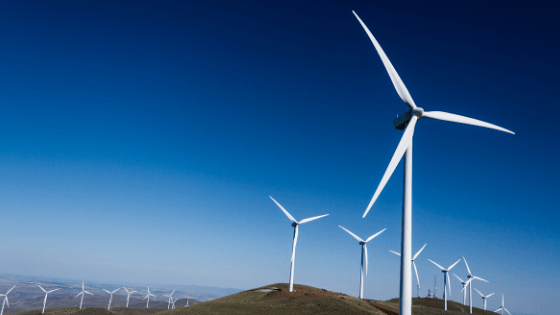It is essential for the world to start looking at sustainable energy sources. It is simply not possible to continue using fossil fuels as we have in the past. We are faced with a climate crisis and we need to find alternative ways of meeting our energy needs.
According to Douglas Healy there are 7 types of sustainable energy sources that we need to be looking at moving forward:
Solar Energy
Solar energy is created through harnessing the radiant energy from sunlight and converting this energy into electricity, hot water or heat.
Solar energy is a fantastic source of renewable energy since it is limitless in supply, making it the best alternative to traditional fossil fuels. In the long term solar energy will be cost efficient and it will reduce the impact on the environment and public health.
In the short term the initial costs of setting up solar energy is incredibly high and not realistically possible for most households. On a practical level it is essential that homeowners have enough sunlight as well as enough space available for solar panels to be installed.

Wind Energy
Wind farms create electricity through capturing the energy of wind flow by using turbines. There are a number of different types of wind energy systems. Some systems can power a great number of organizations.
Wind energy is a great option since it is a clean energy source, so it does not pollute the air like other energy sources.
Wind farms need to be in rural areas which means that the energy needs to be transported into cities using transition lines, which leads to higher costs. While wind energy creates very little pollution there is option opposition to them due to wind farms dominating areas and the noise generated.
Wildlife can also be affected such as birds flying into the turbines.
Hydroelectric
Pumped-storage hydropower is created by water flowing through the turbine of a dam to produce electricity. Run-of-river power is produced when water is funneled through.
Hydroelectric power is an environmentally friendly option since it does not create pollution and it is incredible versatile. However many hydroelectricity facilities use more energy than they can produce.
While hydroelectric power does not cause pollution it can have a negative impact on the animals living in the waterways.
Geothermal Energy
Heat trapped in the earth’s crust and from radioactive decay escapes naturally and all at once in the form of volcanic eruptions and geysers. This heat can be caught and the steam used to create geothermal energy.
While this energy source is not very common it has great potential. It is costly to build the infrastructure needed as well as the possible risk of earthquakes.
Ocean
Two types of energy can be produced from the ocean, namely thermal and mechanical. Thermal energy is generated by the warm water surface temperatures through a variety of systems. Mechanical energy makes use of the tide’s ebb and flow to generate power.
A huge benefit to wave energy is that it is easy to predict which means you can estimate the amount of energy that will be produced. This makes it a much more consistent form of energy and more reliable than wind or solar energy. It is also an abundant source of energy and since many large cities are found near the ocean it is easy to distribute to the local population.
Those who are not near the ocean will not be able to take advantage of wave energy. Ocean energy is a clean source of energy, however large machinery needs to be used which can cause disturb the ocean floor as well as the sea life.

Hydrogen
Hydrogen can be used for electricity and fuel when it is separated from another element. Used as a clean burning fuel, hydrogen can lead to a cleaner environment. Hydrogen can also be used for fuel cells and to power electric vehicles.
The downside is that it takes energy to produce hydrogen which creates pollution, rendering this inefficient.
Biomass
Organic matter from living plants and organisms can create bioenergy. Bioenergy can be created in a variety of ways, including burning biomass or capturing the methane gas produced by naturally decomposing organic materials.
Energy production from biomass creates carbon monoxide, however the production of plants consumes carbon monoxide to balance this out.
It takes some time to grow new plants needed for biomass and the technology needed to replace fossil fuels with biomass are not yet in place.
 Kaboutjie SA Mommy Blogs by Lynne Huysamen
Kaboutjie SA Mommy Blogs by Lynne Huysamen





Worth the read!